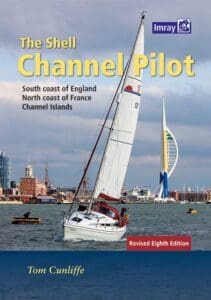I have to confess, when I was asked if I was interested in writing a Blog series on preparing for and passing your RYA exams, I was a bit reluctant. It’s a long time since I had to write something coherent that others can read and criticise. But here we are. The team at Chartroom Online were also very understanding. Start small and pick any subject you like as a starter – get the feel, find your style. So I hope you will bear with me over the next few weeks as I learn this new life skill and forgive my first choice of topic as it’s not really about RYA exams, but it is something I am helping with at the moment, and let’s face it – this is the long-term aspiration of many who start RYA certification journey, so here we go!
Preparing for Your First Atlantic Passage
There’s a moment in every sailor’s life when the Atlantic starts calling – not as a distant idea, but a passage you’re planning in earnest. Whether you’re joining a delivery crew, prepping for the ARC (Atlantic Rally for Cruisers-ed), or finally ticking off a bucket-list passage, preparation is more than half the passage. So here are three things I think every smart skipper needs to keep in mind as they start to plan their encounter with the tradewinds.
Know Where you are going!
It may sound silly, but knowing where you are going and how, ideally, you are going to get there is the start of any passage plan, and it’s especially important for an Atlantic crossing. You’ll need a clear idea of your track, because there are more ways than one to skin this particular cat – and preferably on paper, not just pixels. For me the first choice is not the route, it’s the chart I am going to use to plan it, and the choice is Admiralty or Imray Charts, and their two top contenders are:
- Imray 100 – North Atlantic Passage Chart: A conical projection (1:7,620,000) makes this one ideal for plotting great-circle routes. Colour-coded zones, ice limits, and popular sailing tracks add real-world context.
- Admiralty 4012 – North Atlantic (Southern Part): At 1:10,000,000, it offers a wider view and is SOLAS-compliant and is still the gold standard.
My view? Unless you are on a super yacht, Use Admiralty 4012 for the big picture plan, then Imray 100 at the chart table for day-to-day route checks.
Weather & Passage Planning Advice
No book can tame the trades or predict squalls weeks in advance – but a few can get you pretty close. For me, you’ll want a good guide for your departure coast—somewhere to trial your passage setup, shake down your sails, and enjoy a few short hops before the big crossing. Next you need a ‘brain’ that knows all about the trials, tribulations, and pleasures of the ocean passage, and finally a good Pilot to get you safely into harbour on the other side. My top pick for each?
- Atlantic Islands Pilot by Anne Hammick & RCCPF gives superb landfall detail from the Canaries to the Azores. or Antalntic Spain and Portugal if you are planning a more northerly departure
- Atlantic Pilot Atlas by James Clarke is a weather-routing essential, full of wind roses and seasonal patterns that help you choose when – not just where – to go.
- Cruising Guide to the Windward Isles by Stephen Pavlidis gives you all the detail needed to make a safe landfall in St Lucia or Barbados
Have these three you’ve got the foresight of a thousand hours of logbooks passages.
The Underrated Power of a Logbook
Speaking of logbooks, they are not just a record – they are your proof, your memory, and often your sanity. My top tip – because it’s something I didn’t do but wish I had – start a new one the moment you decide to do your ocean crossing, because the path to the port of departure is as valuable as a memory as the crossing itself and that one volume is one you will go back to again and again. Yes, you can print your own pages (a set of example pages can be found in our skipper’s resources section – ed) a bound record of your voyages will give you years of pleasure – so, when picking yours, I suggest you go for one that has waterproof pages, a lay-flat binding, and a layout that helps remind you to track position, engine hours, weather observations, and repairs. On more than one occasion a smart entry has saved a sailor’s bacon mid-passage. Looking to add polish? Choose one with latitude/longitude tables, tide notes, and VHF quick-reference. And don’t forget spare pencils and a backup headtorch.
My own choice – I have stuck with Fenhurst’s Logbook of Cruising under Sail from the day I passed my day skipper, and each years’ volume is packed with memories I never tire of rereading on a long passage.
Ready to Cross?
Confidence at sea comes from what’s in your head and your hands. These six tools have helped thousands of sailors cross with clarity – and enjoy it so much they came back for more!.


